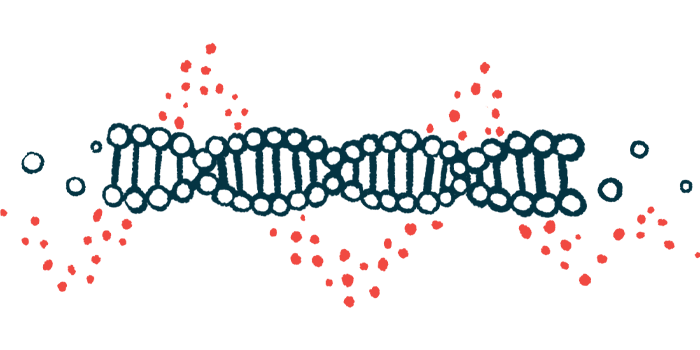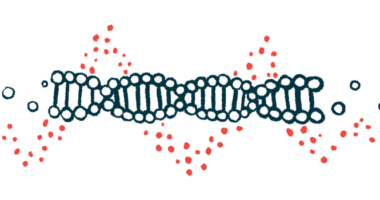Spanish islands a major hotspot for gene mutation tied to FAP
High prevalence of V30M TTR mutations found in Balearic Islands

There is a high prevalence of the Val30Met (V30M) TTR gene mutation — the most common mutation associated with familial amyloid polyneuropathy (FAP) and other forms of hereditary transthyretin amyloidosis (ATTRv) — in Spain’s Balearic Islands, according to a new report by scientists in the region.
The scientists believe that these new data position the region as the third largest focus of V30M cases, after certain areas in Portugal and Sweden.
“The findings presented here spanning two decades of symptomatic and presymptomatic ATTR amyloidosis testing provides nuanced understanding of the genetic landscape and epidemiology of ATTRv amyloidosis in the Balearic Islands,” the researchers wrote. The team further noted that some of the data showed “unexpected findings.”
Importantly, according to the researchers, this study was based solely on public health system data — “which is a limitation,” they wrote, noting other diagnosed individuals may not have been identified or included.
“As a result, our estimated prevalences could be underestimated,” the team wrote.
The study, “Genetic testing and evidence of a founder mutation in a hotspot for hereditary transthyretin amyloidosis,” was published in the journal Scientific Reports.
ATTRv encompasses a group of conditions in which TTR gene mutations lead to the production of an abnormal version of the transthyretin protein, which clumps up and disrupts organ function.
FAP is a form of ATTRv in which transthyretin mainly accumulates in the peripheral nerves, the part of the nervous system outside the brain and spinal cord. These nerves play a crucial role in controlling movement and sensation.
FAP-linked mutation largely endemic to parts of Portugal, Sweden and Japan
V30M is the most common of more than 140 TTR mutations that have been linked to ATTRv. V30M-ATTRv can affect multiple organs and systems, but most often causes symptoms related to nerve damage that are the hallmark of FAP.
Historically, V30M was considered to be largely endemic to northern Portugal, northern Sweden, and two regions in Japan. But the mutation has since been found in other areas, including among people in Spain’s Balearic Islands.
To learn more about ATTRv’s genetic landscape in these islands, the team of scientists reviewed 23 years’ worth of genetic testing data collected from 2001 to 2023.
The data came from 1,478 individuals, representing less than 0.1% of the Balearic population. All had been referred for genetic testing due to clinical suspicion of the disease or based on a positive family history.
The results showed that 319 tests (21.6%) were positive for TTR gene mutations, with the detection of ATTRv carriers increasing over time.
The vast majority of positive cases — 308 people, or 96.6% — were found to harbor the V30M variant.
Women were significantly more likely to test positive for V30M than men (25.6% vs. 17.4%). The greatest sex differences were observed in the population of people who were referred for testing by a cardiologist, where 25% of women and 7.8% of men were positive for V30M.
Data suggest that most V30M carriers in Balearic Islands have common ancestor
People who were tested due to a family history were generally younger than individuals who got tested because they were symptomatic.
Among those without a family history, a higher positivity rate for V30M was seen in younger people, tending to decrease with age. In this group, V30M carriers were diagnosed at an earlier average age than the total population that underwent genetic testing (57.8 vs. 64.9 years).
These relationships with age were not seen in the group of people with a family history, according to the researchers.
In addition to the 308 V30M carriers identified in the scientists’ lab, the team uncovered an additional 125 documented cases of people who had been tested elsewhere during the same two-decade period. That totaled 433 people with the variant, 349 of whom were still alive.
“This updated analysis reveals a high prevalence of the V30M variant across the Balearic Islands …, which we estimate to be 1 in 3,400 inhabitants,” the researchers wrote.
The largest number of cases — 322 people — were on the island of Mallorca, where the estimated prevalence is 1 in 2,900. The estimated prevalence in Menorca was 1 in 4,700, per the data.
V30M was also found in the islands of Ibiza and Formentera, with an estimated prevalence of 1 in 26,000. Cases of V30M-ATTRv had not been previously documented on these islands, the researchers noted.
The scientists indicated that this increasing trend in ATTRv prevalence, “likely reflects the growing awareness of ATTRv amyloidosis among clinicians in our region and a higher efficiency of genetic testing.”
Future research should focus on integrating clinical outcomes with genetic data to optimize treatment strategies and deepen our understanding of ATTRv amyloidosis in genetically diverse populations.
Most V30M carriers (93%) also carried another TTR variant called G6S, which resides on the same part of the gene but is not generally thought to be harmful. Most of the people who did not carry G6S were believed to have ancestral origins outside of the Balearic Islands.
According to the scientists, the data suggest that most V30M carriers in the Balearic Islands descend from a common ancestor.
“The high prevalence rates and the distinct genetic features highlighted in this study underscore the need for a region-specific approach to the management of ATTRv amyloidosis, … and public health initiatives to ensure early diagnosis and intervention,” the researchers wrote.
The scientist stressed that genetic testing “is critical for the accurate diagnosis and management of ATTRv amyloidosis,” preventing misdiagnosis — typically common for people with rare diseases.
“Future research should focus on integrating clinical outcomes with genetic data to optimize treatment strategies and deepen our understanding of ATTRv amyloidosis in genetically diverse populations,” the team wrote.








